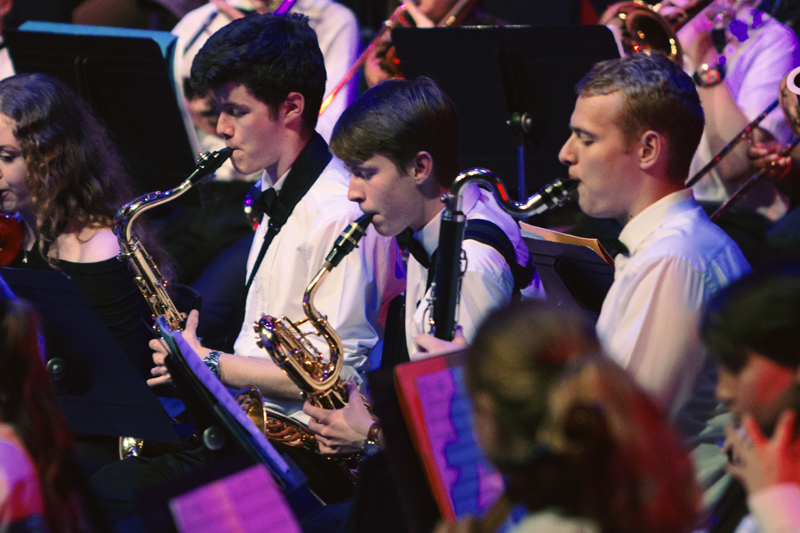Involvement in music fosters important life skills – but too often, it's relegated to the bottom of the list, say these teachers.
There was a time, long ago, when there simply was no music at Belmont Academy. There were no choirs, orchestras or even singing in assemblies, and not a single child learnt to play an instrument.
Thankfully, today, things are very different. With huge support from our local music hub, we made the journey from a primary school without music to one that was rich in it. Now, 140 pupils (32 per cent) have instrumental tuition, every class has a weekly, specialist music lesson and music now features throughout the curriculum.
This didn't happen overnight, and we faced many barriers to getting music into classrooms - attitudes towards music and its perceived "value" is an important starting point.
Not all subjects within the national curriculum are created equally and music is one of the areas that is rarely seen as a real priority when it comes to timetabling pressures.
Maths, English, humanities and languages are all (rightly) regarded as essential parts of a child's education, with no further justification needed.
However, music teachers frequently find themselves having to communicate the additional benefits that their subject will deliver - the list of which is huge. In 2015, Professor Susan Hallam highlighted that music brought about better concentration, confidence, increased wellbeing and improved mental health in her Power of Music Report that was commissioned by the Music Education Council.
This wider value is undisputed, but in truth, we should be celebrating music as a subject in its own right, for its own sake, with equal status to its national curriculum counterparts. After all, music is all around us, every day, throughout our lives and relatable to people in a way that other subjects are not.
Yet for non-specialist primary teachers, bringing music into the classroom can create real anxiety. Tapping into children's creativity creates risk and many teachers will want to avoid anything that has the possibility of adversely affecting behaviour. But ultimately, the benefits to children of being able to express themselves creatively are vast and many will thrive in a more interactive learning environment.
Teaching creative arts involves a different set of techniques and pedagogy to other subjects. Encouraging group work, problem-solving and asking open questions all reflect the collaborative nature of the arts. Giving children the opportunity to think for themselves and gain confidence from the idea that there is no right or wrong answer supports their development in a way that a more binary subject cannot.
Assessing children in a kinaesthetic environment can also be easier, providing ample opportunity for peer and self-evaluation techniques. Being able to provide instant feedback means that children can immediately see the progress they are making, unlike exam-led subjects.
The techniques used to teach music are wholly transferable to other areas of the curriculum - opening the door to more interactive learning, that better suits so many children. Integrating music and creative arts pedagogy into all subjects can be hugely beneficial and support staff development and confidence.
Five steps to embedding music
So, while the value is clear, how, in practical terms, can teachers ensure that their pupils have access to music?
1. Identify your school's musical starting point
If your school has limited experience of music across the curriculum like ours did, then start slowly. Begin with clapping and other simple activities - and note that this doesn't have to involve singing, which raises anxiety among many non-specialist teachers.
2. Seek out your local music hub for specialist support, advice and expertise
Many external organisations can support you to introduce and strengthen music provision in your school or classroom. Every area will have a local music hub like ours that will offer specialist teachers and subsidised expertise to advise on the opportunities available to staff and students.
Our hub, Bexley Music, has been instrumental to our success. The service provides specialist teaching to every class on a weekly basis, as well as a range of extracurricular opportunities for pupils including orchestras, choirs and individual or group tuition.
And remember to tap into your own internal staff network. There may well be music enthusiasts who are keen to step up and introduce students to different types of music and musical activities.
3. Make music relevant to pupils
While it's important not to overly simplify music education, teaching and learning must reflect the changing world. Maximise pupils' interest by encouraging them to experience a wide range of genres and styles, embracing the music they are listening to and comparing rhyming and repetition patterns with more classical pieces for example.
4. Use music and rhythm to reinforce learning across the curriculum
Learning key vocabulary can be effectively supported by music across all subjects. Whether it's making a rap out of keywords, creating a poem or singing along to times table songs - for many children, this will make information stick.
5. Make the most of technology
Children (and teachers) have greater access to music now than ever before, with digital platforms enabling them to listen to any song at the touch of a button, expanding their knowledge and experience of various music genres and eras. A history lesson focusing on real examples of music that was listened to during a specific time period may well spark the interest of students in a different way than simply reading or being told about it.
Music IT software facilitates easy composition and recording - something which can be incorporated into a range of subjects to showcase work.
Madelaine Caplin is the director of school improvement and Bexley Music at London South East Academies Trust.
Lucy Childs is the headteacher at Belmont Academy
Published in tes magazine
SN

